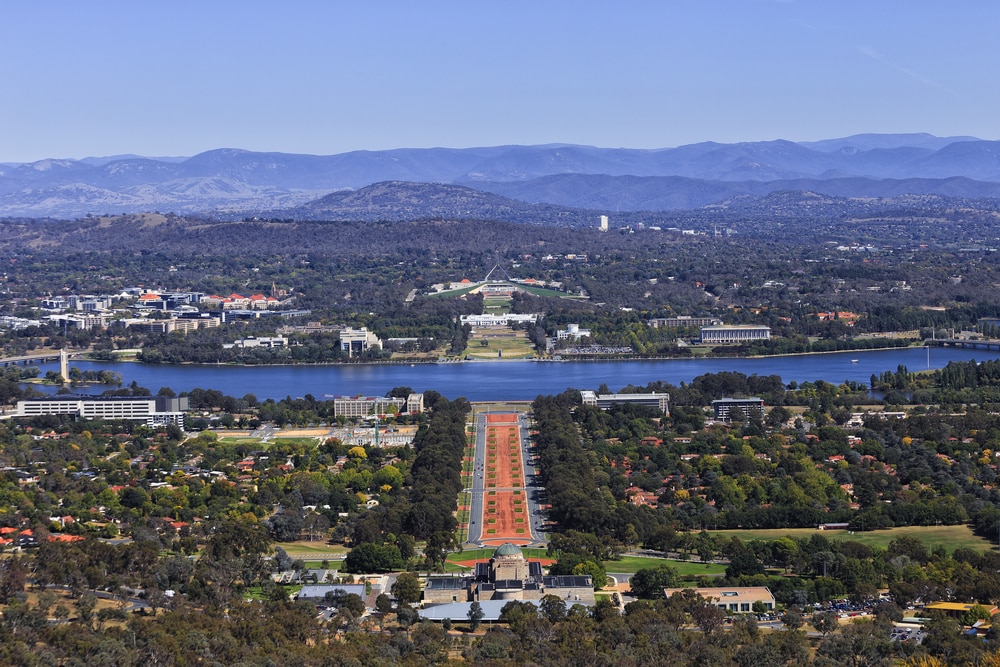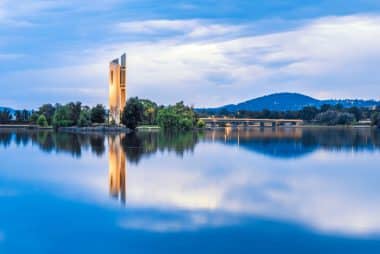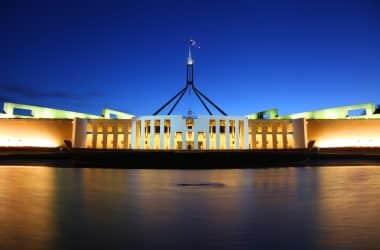
For most people, Canberra will become a household name for the first time when they realize that neither Sydney nor Melbourne are actually the capitals of Australia. Canberra is a little less well-known than the two Australian metropolises, but that doesn’t mean it has anything less to offer for holidaymakers and travellers. In fact, it was mainly the rivalry between the other two cities that led to Canberra being chosen as a compromise solution and planned capital for Australia at the beginning of the 20th century. As the largest city in the interior of Australia, it is a hub between the metropolises and offers some quirks that you can’t find in the coastal cities.
From village to seat of government and capital
Where Canberra can be found today, the indigenous people of Australia and some of the first settlers are said to have found their home. However, the region only really gained importance with the compromise for the search for a capital Australia . The city had to be far enough away from Melbourne and Sydney and should be located in New South Wales due to the approval of the constitution by the population – accordingly the choice fell on Canberra. From 1913 onwards, the construction of the city began, which took place according to a classic tile pattern and was designed from the beginning for growth, which the city was never able to achieve, especially in the first decades. Since much of Australians’ lives took place on the coast, Canberra seemed a little isolated with its own position.
It was not until after the end of the Second World War that wind came into the efforts. Most of the national institutions moved their headquarters to Canberra and some long-held construction projects were put into practice. With the artificial lake in the middle of the city and the growth of the suburbs, Canberra also became interesting for those families who were not directly connected to the government or officials. And so Canberra has been growing for several years now and is developing its own culture, far away from the metropolises of Sydney and Melbourne.
Canberra – Centre of Australian History and Culture

What immediately catches the eye when visiting Canberra is the extraordinary greenery of the city. Trees, lakes and the Molonglo River almost make you forget that you are in comparatively inhospitable terrain here. In addition, there are the monumental buildings that have been built over the decades and which should actually all be visited. By taxi, bus or train, you can move around the city quite relaxed and usually reach most destinations within a few minutes. The light rail was only created in 2019.
A majority of the national museums and theatres can now be found in Canberra, and many of the buildings can be found in the same two neighbourhoods: South Canberra and North Canberra. Since then, the city has developed and today they are something like the city center. The area is also dominated by the original idea of the garden city. Surrounded by trees and man-made lakes and parks, a walk through the city past the old and new parliament is a very special experience. Particularly impressive is also the War Memorial, which commemorates the victims of the wars who fought in the name of Australia.
Not only is the city itself worth a long look, but the immediate surroundings also have a lot to offer. For example, there is the Black Mountain with the Black Mountain Tower. From here you have a unique overview of the city and can take in how the planned city has developed over the past 100 years. In addition, hiking trails, cycle paths and various national parks in the immediate vicinity offer an opportunity to get an overview of the nature around Australia’s capital.
Culture and nightlife in the capital city of Canberra

Culture for the day is delivered in more than one form. Home to many of the country’s important museums, you can easily read deep into the history of the continent’s development and also get in touch with the history of the continent’s indigenous people. After many years in which they played only a subordinate role, their fates are now more present in Canberra’s museums than ever before and paint a different picture of Australia than the often told story of the country as a colony for criminals.
The fact that the nightlife has such a good reputation is certainly thanks to the large number of students in the city. Live music plays an important role here and the theatre is also popular with many visitors. However, the nightlife is considered rather weak, especially compared to that of Sydney and Melbourne. However, this has changed in recent years and especially around the city centre, a colourful mile of restaurants, bars and cafes is developing, which are also well frequented after sunset. However, one must not forget that Canberra is still only the eighth largest city in the country. So it will take a few more years before you can compete with the other cities.
Attractions in Canberra
- Australian War Memorial – A moving tribute to the Australian fallen of the various wars. In addition to the memorial itself, there is a museum that tells the story of Australia in the world wars.
- Parliament House – The modern building of the Australian Parliament is both architecturally impressive and politically significant. Visitors can tour the debate rooms and learn more about Australia’s political processes.
National Gallery of Australia
– Australia’s largest art museum houses an extensive collection of Australian and international art, including Aboriginal and Torres Strait Islander works.- Australian National Botanic Gardens – These botanical gardens showcase the diversity of Australia’s flora. A walk through the different sections offers insights into the plant life of the different Australian ecosystems.
- National Museum of Australia – Dedicated to Australia’s history, culture, and society, this museum features interactive exhibits ranging from Aboriginal times to the modern era.
- Lake Burley Griffin – A man-made lake in the heart of Canberra, ideal for water sports, walks and bike rides along the waterfront paths.
- Questacon – The National Science and Technology Centre, an interactive science museum that offers fun and education for visitors of all ages, with hands-on exhibits and science demonstrations.
- National Library of Australia – The National Library is home to an extensive collection of books, manuscripts, and digital media that focus on Australia’s history and culture.
- Royal Australian Mint – Here, visitors can observe the process of coin production and learn more about the Australian currency.
- Mount Ainslie Lookout – From this vantage point, you have a magnificent view over Canberra and can see the careful planning of the city.

